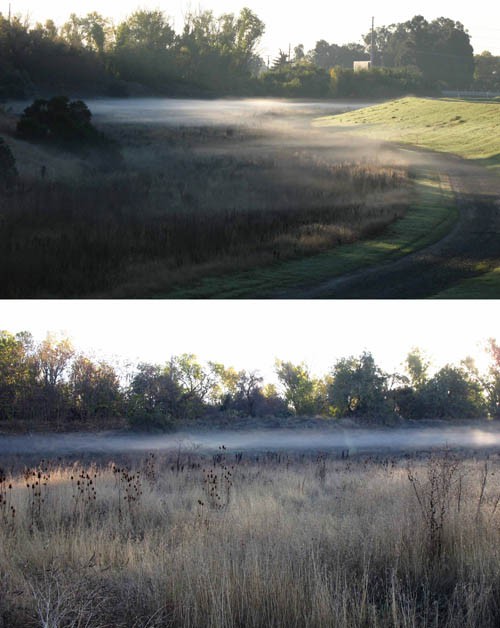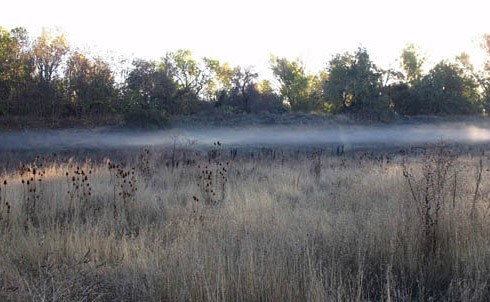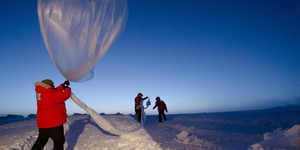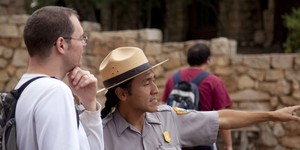Abstract
The poet Carl Sandburg wrote, "The fog comes on little cat feet..." In this weather science fair project, you'll discover why this beautiful, quiet creeper appears on some days, and not on others. If you are fascinated by fog and weather conditions, this science fair project is for you!Summary
Kristin Strong, Science Buddies
 Watch CYBERCHASE on PBS KIDS GO! Check local listings or visit pbskidsgo.org/cyberchase. CYBERCHASE is produced by THIRTEEN in association with WNET. All rights reserved. CYBERCHASE is a trademark of THIRTEEN. The PBS KIDS GO! logo is a registered mark of PBS and is used with permission.
Watch CYBERCHASE on PBS KIDS GO! Check local listings or visit pbskidsgo.org/cyberchase. CYBERCHASE is produced by THIRTEEN in association with WNET. All rights reserved. CYBERCHASE is a trademark of THIRTEEN. The PBS KIDS GO! logo is a registered mark of PBS and is used with permission.

Objective
To determine the weather factors necessary to create radiation fog.
Introduction
Here's a riddle for you: What do you call a cloud that sits on the ground? A cloud with a bad altitude? Nope. Fog! What is fog? Well, imagine a water droplet suspended in the air, like a party balloon that has lost most of its helium and is floating just above the ground. The water droplet is opaque, which means that you can't see through it. So when there are enough water droplets suspended in the air, all close together, and you can't see beyond 1 kilometer (km), then you have the weather event called fog.
In this Cyberchase episode on PBS KIDS GO!, watch as the CyberSquad investigates dew point in order to complete a rescue mission under the cover of fog!
From where do the water droplets come? They originate from water vapor, which is water in its gaseous state. As water vapor cools, it undergoes a process called condensation, where it changes from a gaseous state to a liquid state. You have seen this if you've left a cold container out on your kitchen counter before. As the water vapor in the atmosphere hits the cold container, it cools, and little beads of water form on the outside of the container. The same thing happens, on a larger scale, to make fog.
What weather conditions must exist for fog to form? Fog forms when very moist air (air with high humidity) is cooled to its dew point or saturation point, where it can no longer hold the moisture it contains. For formation, all fogs (and clouds) also need tiny nuclei (like dust or smog particles), on which condensation can form. Weather scientists, known as meteorologists, can determine when fog formation is likely by observing the dew-point depression, which is the temperature difference between the outdoor temperature and the dew point.
You might think that "fog is fog," but meteorologists have grouped fog into many different types, with names like radiation fog, advection fog, sea fog, evaporation fog, steaming fog, freezing fog, hail fog, garua fog, valley fog, upslope fog, precipitation (frontal) fog, and ice fog. These fogs differ in how and where the cooling of the water vapor (the condensation) occurs, which affects their appearance, and how long they last. In this science fair project, you will focus on radiation fog, also sometimes known as ground fog or tule fog (pronounced too-lee fog). Radiation fog doesn't have anything to do with X-rays or radioactivity. The name refers to the cooling of the land that goes on after sunset on a clear night when there is thermal radiation of ground heat into space. Radiation fog, shown in Figure 1, below, often occurs overnight above wet vegetation in autumn or early winter, and usually does not last long after sunrise. Meteorologists have identified a number of factors that can contribute to the formation of radiation fog on any given morning, including:
- Wet soil or vegetation (from a previous day's rain)
- Light wind
- Clear overnight skies
- Low dew-point depression
In this science fair project, you will record weather conditions in your area over several weeks to see which of these factors, or combinations of factors, has the greatest impact on the formation of radiation fog.
 Image Credit: Kristin Strong, Science Buddies / Science Buddies
Image Credit: Kristin Strong, Science Buddies / Science Buddies
Figure 1. Examples of radiation fog, also known as ground fog or tule fog.
Terms and Concepts
- Suspend
- Water vapor
- Condensation
- Humidity
- Dew point
- Saturation point
- Nuclei
- Meteorologist
- Dew-point depression
- Radiation fog
- Ground fog
- Tule fog
- Thermal radiation
Questions
- What is fog?
- Why can't you see through fog?
- What factors are required to form all fogs?
Bibliography
- Weather.com. (2008). The Weather Channel. Retrieved December 19, 2008.
- PBS Kids Go! Cyberchase. (2009). The Foggiest Idea (Episode 701: Gone with the Fog). Thirteen/WNET. Retrieved February, 27, 2012.
This source describes the factors that help form radiation fog:
- Haby, J. (2000). Radiation Fog Ingredients. Retrieved November 20, 2008.
This source describes and provides example photos of the different types of fog, including radiation fog:
- NOAA National Weather Service National Oceanic and Atmospheric Association. (n.d.). Radiation Fog. Retrieved November 5, 2020.
Materials and Equipment
- In this science fair project, you will need to make daily, or near-daily, observations of an area with considerable plant matter. If such an area is not easily observable from your home, then you will need transportation to frequently visit a field, park, or other location that is within 10 minutes travel time (one way) from your home, to record your observations.
- A computer with Internet access
- Optional: Camera
- Optional: Helper
- Lab notebook
- Graph paper
Experimental Procedure
Collecting Your Weather Data
Notes Before You Begin:
This experiment requires daily (or near-daily) visual observations and twice-daily online measurements of the weather for several weeks. Timing is important for these observations:
- The first set of online measurements should be collected prior to sunrise or in the half-hour following sunrise. This will also be the time of the visual observation.
- The second set of online measurements should be collected in the evening, either before or after sunset. The exact timing of the second set of measurements is less important than the first, but try to be fairly consistent about when you take your online measurements from day to day.
- Go to The Weather Channel and enter the zip code or city name corresponding to the location of the field, park, or other area of vegetation that you are going to observe.
-
Enter weather information—time, temperature, wind, humidity, and dew point—from the website, into a data table twice a day, once prior to sunrise, or in the half-hour following sunrise, and once in the evening.
- For your morning measurements, do not use the online indicator of weather conditions (clear, cloudy, foggy, etc.) for your data table. Instead, look at the field, park, or other area with heavy vegetation that you have chosen, and record the weather conditions that you see there in a data table, like the one below, in your lab notebook. If you see foggy conditions, note whether it is radiation fog or not, and take photos for your display board, if desired. If you cannot see the area you are observing from your home, have a helper write down your online measurements (time, temperature, wind, humidity, and dew point) while you are making your visual observation of the weather conditions. Or make and record your online measurements immediately before, or immediately after, you return home from making your visual observation.
- For the evening measurements, use the online indicator of weather conditions and record them in another data table, similar to the one below. You do not need to make visual observations in the evening.
| Date | Time | Temperature | Wind | Humidity | Dew Point | Dew-Point Depression (Temperature - Dew Point) | Visual Observation of Weather Conditions (Clear, Cloudy, Type of Fog, etc.) |
| Date | Time | Temperature | Wind | Humidity | Dew Point | Any Precipitation During the Day? | Online Indication of Weather Conditions (Clear, Cloudy, Foggy, etc.) |
Analyzing Your Data Table
- For each row in your Morning Data Table, calculate the dew-point depression, and enter your calculations in your data table. Remember from the Introduction, dew-point depression is the temperature difference between the outdoor temperature and the dew point.
- Make a graph. For each entry that has foggy conditions (of any type) in your Morning Data Table, plot the temperature on the x-axis and the dew point on the y-axis. What do you notice about the plot? Is it linear?
- What do you notice about the dew-point depression for all the foggy mornings in your data table? What do you notice about the dew-point depression for all the non-foggy mornings?
- For each entry that has radiation fog as a weather condition in your Morning Data Table, look at the preceding evening's data from your Evening Data Table. What percentage of mornings with radiation fog had precipitation the previous day? What percentage of mornings with radiation fog had clear skies the previous evening?
- What percentage of mornings with radiation fog had light winds, meaning winds between 1 and 7 miles per hour (mph)?
- Rank the radiation fog factors—dew-point depression, rain the previous day, clear overnight skies, and light morning winds—from the most commonly observed to the least commonly observed.
Ask an Expert
Variations
- On mornings with radiation fog, start taking online measurements half an hour before sunrise, and then every 15 minutes until the fog disappears (If you cannot see the fog from your home, have a helper take and record online measurements while you are at the location, writing down the time and your visual observations of the radiation fog.) Plot the dew-point depression and humidity on the y-axis, and time on the x-axis. How long does it take for the fog to dissipate under the current temperature and wind conditions? Repeat on two more mornings with radiation fog to see how dissipation time changes with temperature and wind conditions.
- Take photographs of radiation fog for three mornings, from the same vantage point and at the same angle. Use a tripod, if possible. Record the weather conditions for those three mornings. Using your photographs, compare the relative heights of the radiation fog. Does a calmer wind create a lower-lying fog? Does temperature affect the relative heights?
Careers
If you like this project, you might enjoy exploring these related careers:









